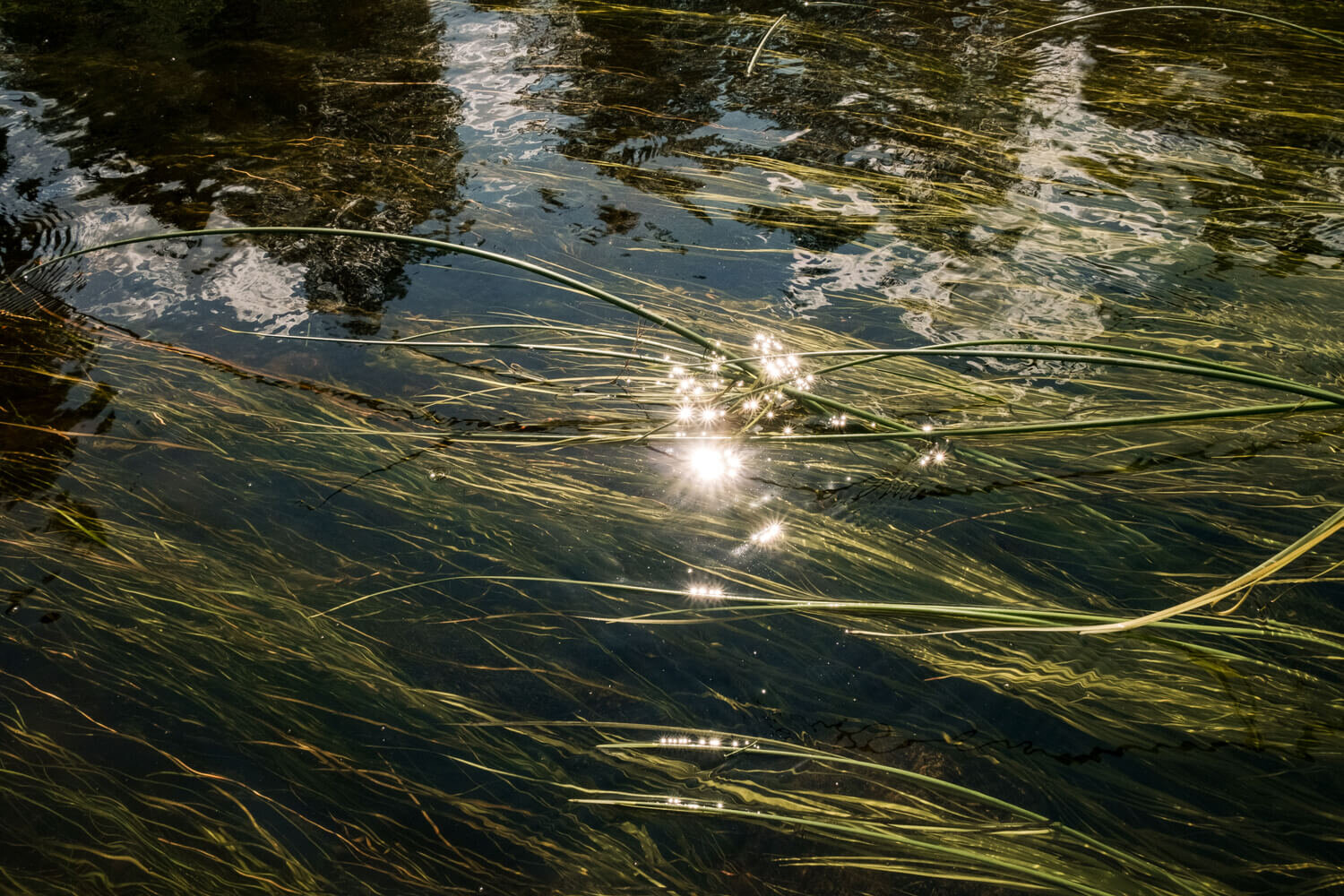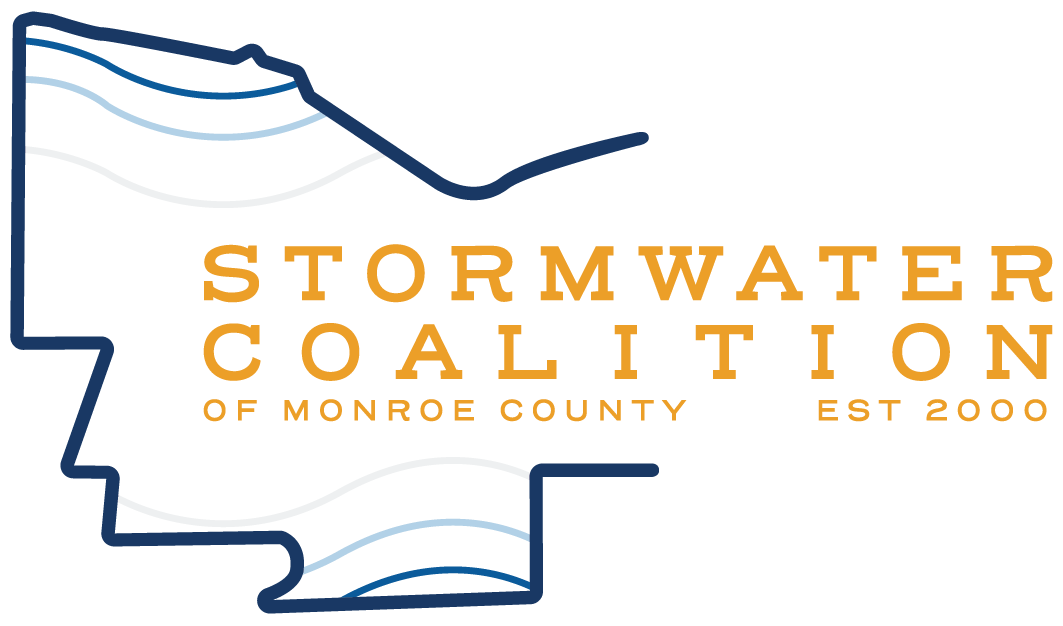Stormwater Wetlands
The stormwater wetland in your subdivision provides two primary benefits to you and the environment.
These facilities remove pollutants carried in storm water and control flooding from heavy storms.
Stormwater wetlands require very little maintenance. However, like any part of your neighborhood or home, they require some care to function properly.There are times when a municipal agency may remove sediment or brush in order to prevent flooding. These measures should only be done as needed and not as part of an annual maintenance program. A properly maintained and functioning stormwater wetland will have a very naturalistic appearance. Residents should not expect a manicured look.
Sometimes, residents are surprised when a stormwater facility develops nuisance waterfowl or algae problems. However, there are several steps that residents can take to prevent these problems and protect the quality of a stormwater wetland. This page is intended to explain these measures as well as to educate residents on how wetlands work.
Irondequoit Bay Wetlands, Irondequoit.
What are the benefits of Stormwater Wetlands?
Stormwater Wetlands Primary Functions
Stormwater wetlands detain stormwater during and after a storm and thus safeguard against downstream flooding.
Stormwater wetlands filter pollutants contained in stormwater runoff. Without a stormwater wetland, these pollutants would be transported to our streams, bays, ponds, and lakes. These resources would be degraded for recreational and other uses.

How do Stormwater Wetlands protect water quality?
The stormwater wetland in your subdivision is carefully designed to remove pollutants from stormwater runoff. The wetland plants, such as cattails, are a critical part of this process. The plants slow the flow of water, thus allowing suspended particles and associated pollutants to settle and water to move downward into the soil. Pollutants, such as phosphorus, are utilized by the plants and abundant microorganisms. Chemical reactions convert pollutants into less harmful substances.
Do Stormwater Wetlands promote the spread of West Nile Virus?
Some people living near wetlands, both natural and created, have expressed concern about the role of these ecosystems in the spread of West Nile Virus.
While many species of mosquitoes are associated with wetlands, field investigations in New York and other states have indicated that the most common carrier of West Nile Virus (Culex pipiens/restuans) is not produced in large numbers in natural or properly constructed stormwater wetlands. These mosquitoes are more closely associated with highly enriched, stagnant, and oxygen-deficient water that does not contain predators. This type of water is more commonly found in improperly draining catch basins and improperly maintained or blocked roof gutters, small pools or pool covers, water-filled buckets, tires and other small artificial containers.
In addition to cleaning clogged gutters and removing empty containers that collect rainwater, residents can minimize mosquito breeding on or near their homes through the following methods:
Create favorable habitat for birds, bats, and amphibians that eat mosquitoes.
Minimize nutrient loading through low impact lawn care and proper fertilizer usage.
Establish fish populations such as sunfish that are native, good consumers of larvae, and survive in diverse stillwater habitats adjacent to the wetland.
Do not mow to the edge of the facility.
Erie Canal, Brockport.
How can I prevent nuisance waterfowl problems?
Stormwater facilities with large open water areas will attract nuisance waterfowl such as Canada Geese.
When large numbers of waterfowl permanently reside in a stormwater management facility they can cause property damage and environmental degradation. Waterfowl can be noisy and produce seemingly endless quantities of manure. The manure litters the shoreline and contributes nutrients to the pond that can result in excessive algae growth. Overcrowding is also unhealthy for the waterfowl.
Stormwater wetlands are designed to discourage geese by limiting the size of open water areas and including cattail buffers along the entire perimeter.
Neighbors can take the following additional steps to control waterfowl populations in a humane and environmentally sensitive manner:
Please do not feed waterfowl, even desirable species! Our food is a poor dietary substitute for what birds would naturally eat.
Leave a buffer of natural vegetation (five feet or more) adjacent to the wetland. Do not mow to the edge of the facility. Geese avoid ponds that lack access to the water from short grass areas.
How do I prevent excessive algae growth in a Stormwater Wetland?
Algae (a singular or many-celled type of plant) is an important part of the ecosystem. Within stormwater wetlands, a moderate amount of algae is beneficial because it produces oxygen and takes up nutrients in stormwater runoff, thus improving water quality.
Excessive quantities of algae can be avoided by minimizing the input of nutrients into the wetland. Lawn care should be conducted in an environmentally sensitive manner so as to avoid the wash-off of fertilizers to the wetland.
If there are concerns that algae is growing to excessive levels, it is recommended that you contact the Monroe County Soil & Water Conservation District at (585) 473-2120.
Stormwater Pond, Hilton.
What is environmentally friendly lawn care?
The appearance of the stormwater wetland in your neighborhood can be affected by your lawn care practices. Precipitation and irrigation creates runoff that can transport fertilizer from your yard to the wetland where it can promote nuisance algae growth. Before you apply fertilizer to your lawn, take a soil test. Soil test kits are available for a nominal charge through Cornell Cooperative Extension (585) 461-1000. Many soils in Monroe County are high in phosphorus so additional inputs of fertilizer are unnecessary.
Also, grass and leaf clippings should be left on the lawn as they provide many beneficial nutrients. If you prefer to dispose of your clippings, they should be placed in a compost pile. Lawn and leaf clippings should never be disposed of in the wetland because they contain nutrients that can promote excessive algae growth, which can show up as green scum on the water.
Improperly or excessively applied pesticides can also be transported to the wetland via runoff.
Pesticides should only be used after all other methods of pest control have been exhausted. Information regarding alternative methods of pest control is available through Cornell Cooperative Extension. Never dispose of pesticides or fertilizers in the storm sewer because they will be transported directly to the nearest waterway and degrade the ecosystem. Unwanted pesticides and fertilizers should be disposed of at the Monroe County Household Hazardous Waste Facility. Call (585) 753-7600 option 3 for information.
Concrete Channel, Pittsford.
How safe are Stormwater Wetlands?
Safety is an important consideration in stormwater wetland design. Typically, wetlands include gently sloping banks and a buffer of natural vegetation in order to discourage access to deeper water areas. Nevertheless, children who live and play near any body of water should be taught to maintain a safe distance from the water’s edge— just as they are taught road safety.

What type of maintenance do Stormwater Wetlands require?
Long-term maintenance of stormwater wetlands is less expensive than other stormwater management practices. Vegetation is allowed to grow naturally (unmowed) in order to filter stormwater runoff and discourage geese. On occasion, vegetation may need to be cleared away from inlet and outlet structures. Any dumping of waste within the wetland will reduce its efficiency and increase the need for maintenance.
How will a Stormwater Wetland affect the appearance of my neighborhood?
It is important to remember that the primary purpose of a stormwater wetland is to control flooding and to remove stormwater pollutants. While it is true that everyone has a different view of what is aesthetic, a well-designed stormwater wetland that includes a variety of trees, shrubs, grasses, wildflowers, and wetland plants can be a very naturalistic and attractive part of your neighborhood.
Our quality of life and economic well-being are closely linked to the quality of our natural resources.
With the many ways that wetlands help to protect water quality, a new outlook is evolving. The use of constructed wetlands is an emerging technology that is gaining popularity. Consider the benefits that the stormwater wetland in your neighborhood provides and please do your part to protect our natural resources.




